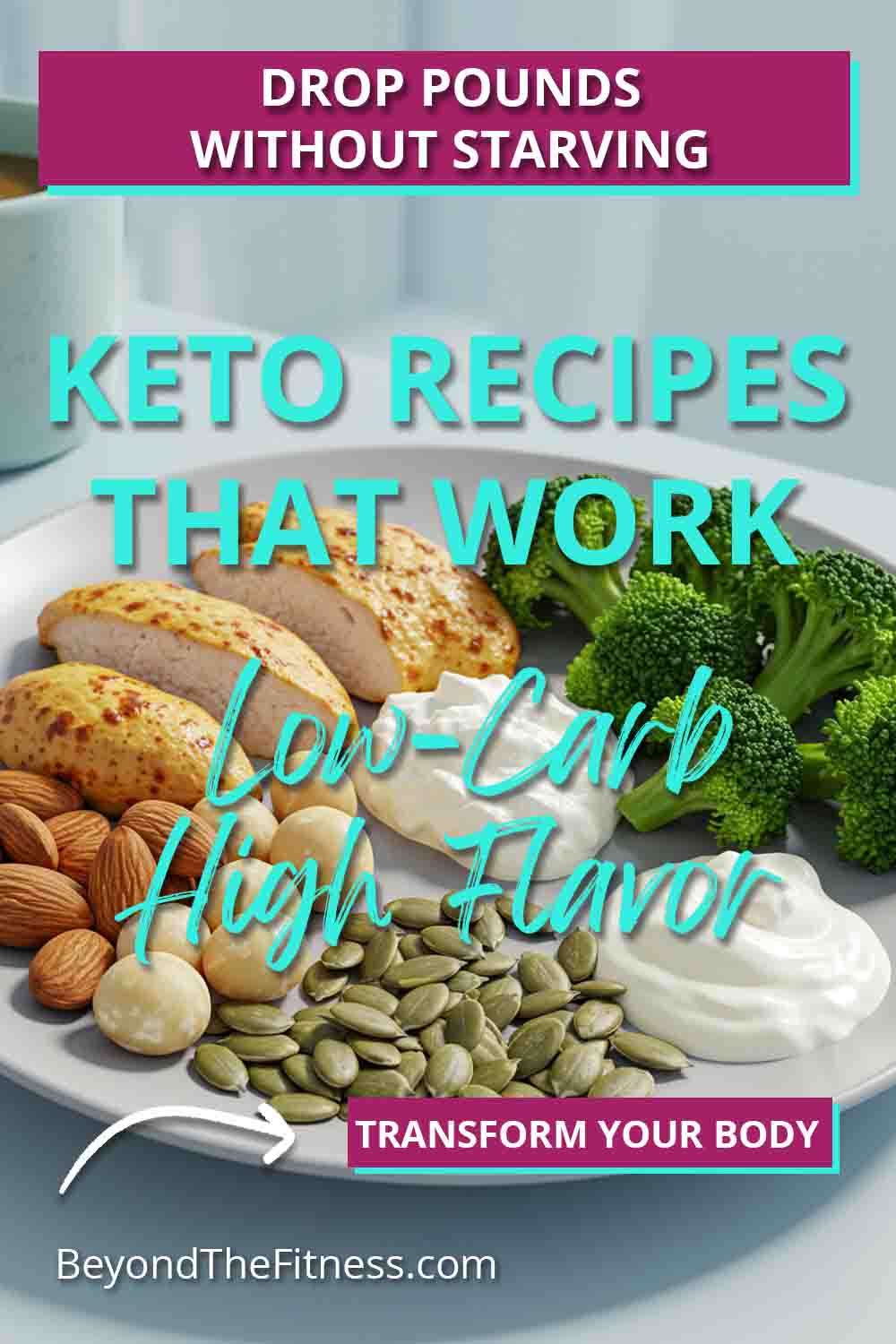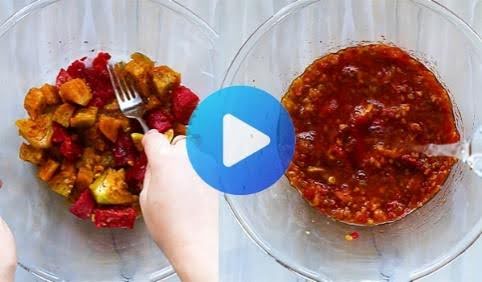Have you heard about the keto diet. Lots of people talk about it for losing weight. Maybe you wonder if it could work for you. It’s a way of eating that changes how your body gets energy. Instead of using sugar from carbs like bread or pasta, your body starts burning fat for fuel. This sounds interesting, right. Let’s dive in and see what it’s all about.
I’ve worked with many people trying to reach their weight goals. Some have found success with keto. Others found it wasn’t the right fit. It’s really personal. My goal here is to give you information so you can understand it better. We’ll look at how it works, what the science says in simple terms, and importantly, what it means for women specifically. Plus, I’ll share some easy and tasty recipes to show you that keto food can be enjoyable.
What Exactly Is the Keto Diet?
Think of your body like a car. Most cars run on gasoline. Our bodies usually run on glucose, which is sugar we get from carbohydrates (carbs). Carbs are in foods like bread, rice, potatoes, fruit, and sugary snacks.
The keto diet, short for ketogenic, is like changing your car’s engine to run on a different fuel. Instead of gas (glucose), it runs on fat. To make this happen, you have to eat very few carbs. You also eat a moderate amount of protein and a higher amount of fat.
When you cut way back on carbs, your body doesn’t have enough glucose for energy. So, it looks for another source. It starts breaking down fat, both the fat you eat and the fat stored in your body. This process creates molecules called ketones. Your body and brain can use these ketones for energy. When your body is using ketones as its main fuel source, it’s in a state called ketosis.
You Might Be Interested In: Delicious Keto Meals Tailored to Your Needs With Custom Keto Diet
So, the main idea is:
- Very low carbs (usually under 50 grams a day, sometimes even lower)
- Moderate protein
- High fat
This forces your body to switch from burning sugar to burning fat.
How Could Keto Help with Weight Loss?
People often lose weight on keto, especially in the beginning. There seem to be a few reasons why this might happen.
First, when you cut carbs, your body releases a lot of water weight. Carbs make your body hold onto water. So, the initial drop on the scale is often water, not just fat. This can be motivating though.
Second, fat and protein tend to make you feel fuller than carbs do. When you eat keto meals rich in fat and protein, you might find you’re not as hungry between meals. This can lead to eating fewer calories overall without feeling starved. I’ve seen this help many people manage their appetite better.
Third, being in ketosis means your body is actively burning fat for energy. This includes the fat stored on your body. It’s like your body becomes a fat-burning machine.
Also, cutting out sugary drinks, desserts, and processed snacks, which are high in carbs, naturally removes a lot of empty calories from your diet. This alone can contribute to weight loss.
However, it’s important to remember that weight loss still comes down to calories. Even on keto, if you eat more calories than your body burns, you won’t lose weight. The high-fat foods on keto can be very high in calories, so portion control is still key.
Keto for Women: Special Things to Think About
Our bodies as women are complex. Hormones play a big role in everything, including how we respond to different diets. Keto is no exception.
Some women thrive on keto. They report steady energy, less brain fog, and successful weight loss. It can sometimes help with conditions like Polycystic Ovary Syndrome (PCOS), which is linked to insulin resistance. Since keto lowers insulin levels, some women with PCOS see improvements.
However, other women find keto challenging.
- Hormonal Changes: Drastically cutting carbs can sometimes affect thyroid hormones or stress hormones like cortisol. For some, this might lead to fatigue, hair loss, or irregular periods. It’s not super common, but it’s something to be aware of. Listening to your body is crucial.
- Nutrient Needs: Women have specific nutrient needs, especially for things like iron, calcium, and folate. Because keto cuts out entire food groups (like grains, legumes, and many fruits), it’s important to plan carefully to make sure you’re getting all the vitamins and minerals you need. Focusing on nutrient-dense keto foods like leafy greens, avocados, nuts, seeds, and fatty fish is important.
- Social Eating: Let’s be honest, social events often revolve around food. Sticking to keto can sometimes feel isolating when everyone else is eating pizza or cake. Finding ways to navigate social situations while staying on track requires planning.
- Pregnancy and Breastfeeding: Keto is generally not recommended during pregnancy or breastfeeding because nutrient needs are much higher, and the long-term effects on the baby aren’t well understood.
My advice for women considering keto is to start slowly, pay close attention to how your body feels, and focus on whole, unprocessed keto-friendly foods. Don’t be afraid to adjust things if it doesn’t feel right.
Understanding Ketosis: The Simple Science
Okay, let’s talk a bit more about ketosis without getting too complicated.
Normally, when you eat carbs, your body breaks them down into glucose (sugar). Glucose enters your bloodstream, and your blood sugar goes up. Your pancreas then releases insulin. Insulin is like a key that unlocks your cells, letting glucose enter to be used for energy. Extra glucose gets stored in your liver and muscles as glycogen, or converted to fat if there’s too much.
When you eat very few carbs (like on keto):
- Your blood sugar and insulin levels stay low.
- Your body uses up its stored glycogen quickly (usually within a day or two).
- With no glucose coming in and glycogen stores empty, your body needs a new fuel.
- Your liver starts breaking down fatty acids (from your food and body fat) into ketone bodies.
- These ketones – mainly beta-hydroxybutyrate (BHB), acetoacetate, and acetone – are released into your bloodstream.
- Most cells in your body, including your brain cells, can use these ketones for energy instead of glucose.
That’s ketosis. It’s a natural metabolic state. Our ancestors likely went into ketosis during times when food, especially carbs, was scarce.
Getting into ketosis usually takes a few days of strict low-carb eating. Staying in ketosis requires consistently keeping your carb intake very low. Eating too much protein can sometimes kick you out of ketosis too, because the body can convert some protein into glucose if needed. That’s why keto is moderate, not high, protein.
Introducing: Benefits of Custom Meal Plans With Keto Diet
Exercising While on Keto
Can you exercise on keto. Yes, absolutely. In fact, exercise is always important for overall health and weight management. But how you feel exercising might change, especially when you first start keto.
The Adaptation Phase: When you first switch to keto, your body is adapting to using fat for fuel instead of carbs. During this time (sometimes called the “keto flu” phase, which can last a few days to a couple of weeks), you might feel tired, weak, or less motivated to exercise. Your performance in high-intensity workouts might dip temporarily. This is normal. Your body is learning a new skill.
Best Exercises for Keto:
- Low-Intensity Steady State (LISS) Cardio: Activities like brisk walking, jogging, cycling, or using the elliptical at a moderate pace are often well-tolerated, even during adaptation. Your body is pretty good at using fat for fuel during lower-intensity activities.
- Strength Training: Lifting weights is great on keto. It helps preserve muscle mass while you’re losing weight. You might need slightly longer rest periods between sets initially, but many people find their strength returns or even improves once they are keto-adapted.
- High-Intensity Interval Training (HIIT): This type of exercise relies heavily on glucose for quick bursts of energy. Performance might suffer a bit on keto, especially at first. Some people find that once they are fully keto-adapted (which can take several weeks or months), their HIIT performance improves. Others find they do better with slightly less intense interval training.
Tips for Exercising on Keto:
- Listen to Your Body: Don’t push yourself too hard, especially in the beginning. Rest when you need to.
- Stay Hydrated: Keto can have a diuretic effect (makes you pee more), so drinking enough water is crucial.
- Electrolytes: You lose electrolytes (sodium, potassium, magnesium) along with water on keto. Low electrolytes can cause fatigue, cramps, and headaches. Make sure you’re getting enough, perhaps by adding salt to food, eating potassium-rich keto foods (like avocado and spinach), and considering a magnesium supplement if needed.
- Timing: Some people find exercising in a fasted state (like in the morning before eating) helps enhance fat burning. Others prefer to have a small keto snack beforehand. Experiment to see what works for you.
Exercise and keto can work well together. Just give your body time to adjust.
Delicious and Easy Keto Recipes
Eating keto doesn’t mean eating boring food. Far from it. Here are some simple ideas to get you started. Remember, these focus on whole foods.
Keto Breakfast Ideas:
- Scrambled Eggs with Avocado and Spinach:
- Scramble 2-3 eggs in butter or coconut oil.
- Just before they’re done, stir in a handful of fresh spinach until wilted.
- Serve topped with half a sliced avocado and a sprinkle of salt and pepper. Simple, filling, and full of healthy fats.
- Keto Chia Seed Pudding:
- Mix 3 tablespoons of chia seeds with 1 cup of unsweetened almond milk or coconut milk (the canned kind for extra creaminess).
- Add a splash of vanilla extract and maybe a keto-friendly sweetener like stevia or erythritol if you like.
- Stir well and refrigerate overnight (or for at least 4 hours).
- In the morning, top with a few berries (like raspberries or blueberries, in moderation) and some chopped nuts or seeds.
- Bacon and Eggs:
- A classic for a reason. Cook a few strips of bacon until crispy.
- Fry or scramble eggs in the bacon grease for extra flavor.
- Big Salad with Grilled Chicken or Salmon:
- Start with a base of leafy greens (lettuce, spinach, kale).
- Add other low-carb veggies like cucumber, bell peppers (in moderation), celery, and olives.
- Top with grilled chicken breast, canned tuna or salmon, or hard-boiled eggs for protein.
- Add healthy fats like avocado slices, nuts, or seeds.
- Dress with an olive oil and vinegar dressing (check labels for sugar). Avoid creamy dressings unless you know they are keto-friendly.
- Lettuce Wraps:
- Use large lettuce leaves (like iceberg or butter lettuce) instead of bread or tortillas.
- Fill with seasoned ground beef or turkey, shredded chicken salad (made with keto mayo), or tuna salad. Add chopped veggies for crunch.
- Avocado Egg Salad:
- Mash 2-3 hard-boiled eggs with one ripe avocado.
- Mix in a tablespoon of keto-friendly mayonnaise or plain Greek yogurt (check carb count), a squeeze of lemon juice, salt, and pepper.
- Eat with celery sticks or on its own.
Keto Dinner Ideas:
- Baked Salmon with Roasted Asparagus:
- Place salmon fillets on a baking sheet. Drizzle with olive oil, lemon juice, salt, and pepper.
- Toss asparagus spears with olive oil, salt, and pepper, and place them alongside the salmon.
- Bake at 400°F (200°C) for about 12-15 minutes, or until salmon is cooked through and asparagus is tender-crisp.
- Chicken Stir-fry with Cauliflower Rice:
- Stir-fry sliced chicken breast or thighs in sesame oil or avocado oil with low-carb veggies like broccoli, bell peppers (use sparingly), mushrooms, and green beans.
- Use coconut aminos or tamari (check labels) instead of soy sauce for flavor, along with ginger and garlic.
- Serve over cauliflower rice (you can buy it frozen or make your own by grating cauliflower).
- Zucchini Noodles with Meat Sauce:
- Use a spiralizer to make noodles from zucchini (“zoodles”).
- Brown ground beef or turkey. Add a low-sugar marinara sauce (read labels carefully, many have hidden sugar) or make your own with canned tomatoes, herbs, and spices.
- Simmer the sauce.
- Lightly sauté the zoodles in olive oil for a few minutes until slightly tender (don’t overcook or they get mushy).
- Top the zoodles with the meat sauce. Add parmesan cheese if you like.
Keto Snack Ideas:
Sometimes you just need a little something between meals.
- Handful of nuts (almonds, macadamia nuts, walnuts – watch portions as calories add up)
- Cheese sticks or slices
- Olives
- Hard-boiled eggs
- Celery sticks with cream cheese or nut butter
- Pork rinds (check ingredients for added sugar)
- Avocado with salt and pepper
- Small amount of berries with heavy cream
As you can see, keto food can be varied and tasty. It focuses on real, whole foods.
Is Keto Right for Everyone?
Keto can be effective for weight loss for some people, but it’s not a magic bullet, and it’s not suitable for everyone.
It requires significant dietary changes and can be restrictive. This can make it hard to stick to long-term. Sustainability is key for any eating plan aimed at weight management. If you find keto too difficult to maintain, it might not be the best approach for you.
People with certain medical conditions should be cautious or avoid keto altogether. This includes those with kidney disease, liver problems, pancreatitis, or certain metabolic disorders. It’s always best to talk to your doctor or a registered dietitian before starting a restrictive diet like keto, especially if you have any underlying health issues or are taking medications.
The “keto flu” is real for many people starting out. Symptoms can include headache, fatigue, nausea, irritability, and brain fog. These usually pass within a week or two as your body adapts, but they can be unpleasant. Staying hydrated and ensuring adequate electrolyte intake can help minimize these symptoms.
Long-term effects of keto are still being studied. While it appears safe for many in the shorter term, we need more research on its impact over many years.
Finding Your Path
Weight loss is a journey, and there are many paths to reach your goals. Keto is one possible tool in the toolbox. It works by shifting your body’s fuel source from carbs to fat, which can help with appetite control and fat burning.
For women, it’s important to consider potential hormonal effects and nutrient needs. Listening to your body is paramount.
If you’re thinking about trying keto, my advice is:
- Do Your Research: Understand what it involves.
- Talk to a Professional: Discuss it with your doctor or a dietitian, especially if you have health concerns.
- Focus on Whole Foods: Build your meals around nutrient-dense keto options.
- Stay Hydrated and Mind Electrolytes: This helps manage side effects.
- Be Patient: Give your body time to adapt.
- Listen to Your Body: If it doesn’t feel right, it might not be the right path for you. Don’t force it.
- Remember Sustainability: Choose an eating pattern you can stick with long-term.
Keto involves a big shift in eating habits. It requires planning and commitment. The recipes I shared show that the food can be delicious. Whether it’s the right answer for your weight loss goals depends on your individual body, lifestyle, and preferences. Explore it carefully if you’re interested, but know that other healthy eating patterns can also lead to successful weight management. The best diet is the one that is healthy, balanced, and sustainable for you.
Related YouTube Video
For more insights into the keto diet, you might find this video helpful:
Final Thoughts
Making changes to how you eat is a big step. Thinking about keto means you’re looking for ways to improve your health and reach your weight goals, and that’s commendable. Remember that information is power. Learning about different approaches, like keto, helps you make choices that feel right for you. Focus on nourishing your body with good foods, moving in ways you enjoy, and being patient with yourself throughout the process. Your health journey is unique to you.







